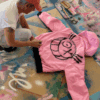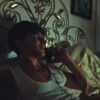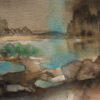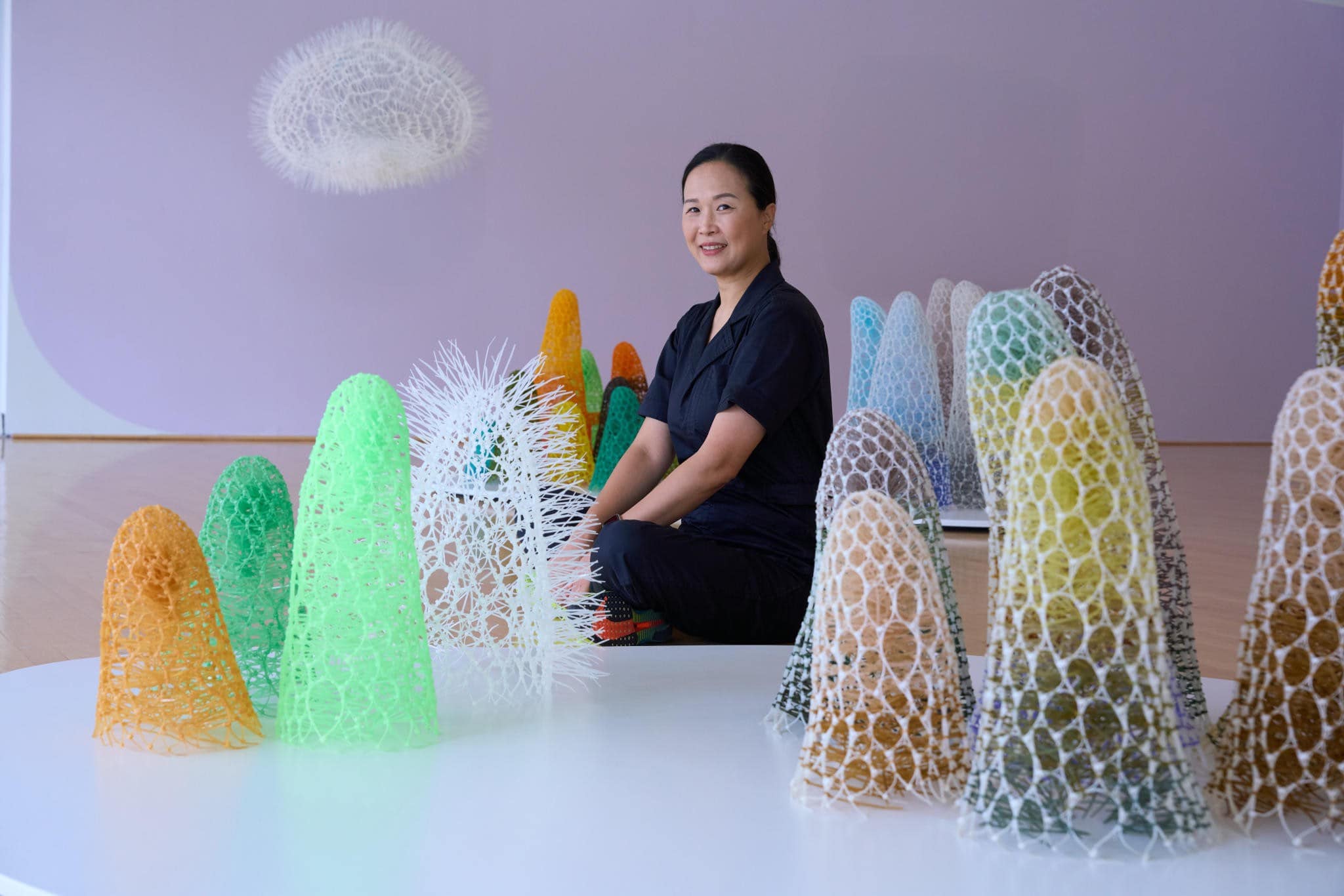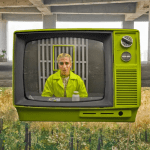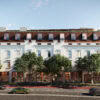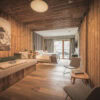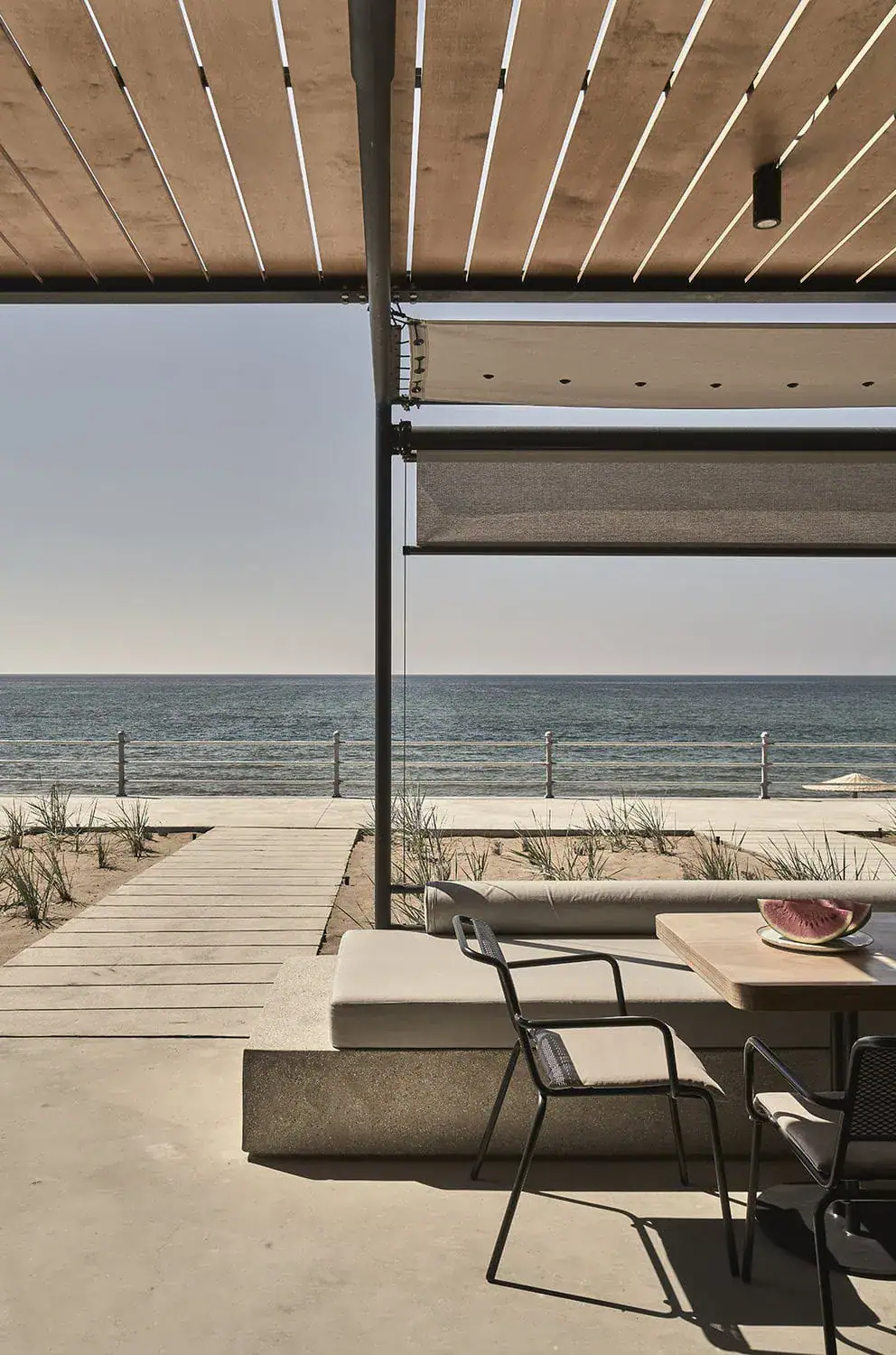When zip ties begin to breathe – inside Sui Park’s exhibition Bio Morphe at the Moody Center for the Arts, Houston
In her exhibition Bio Morphe at the Moody Center for the Arts in Houston, Sui Park unfolds a delicate choreography between interior and exterior space. Her woven sculptures – crafted entirely from zip ties – seem to float and expand, creeping across floors and walls, growing like living networks. What begins as industrial plastic becomes, in her hands, a breathing organism.
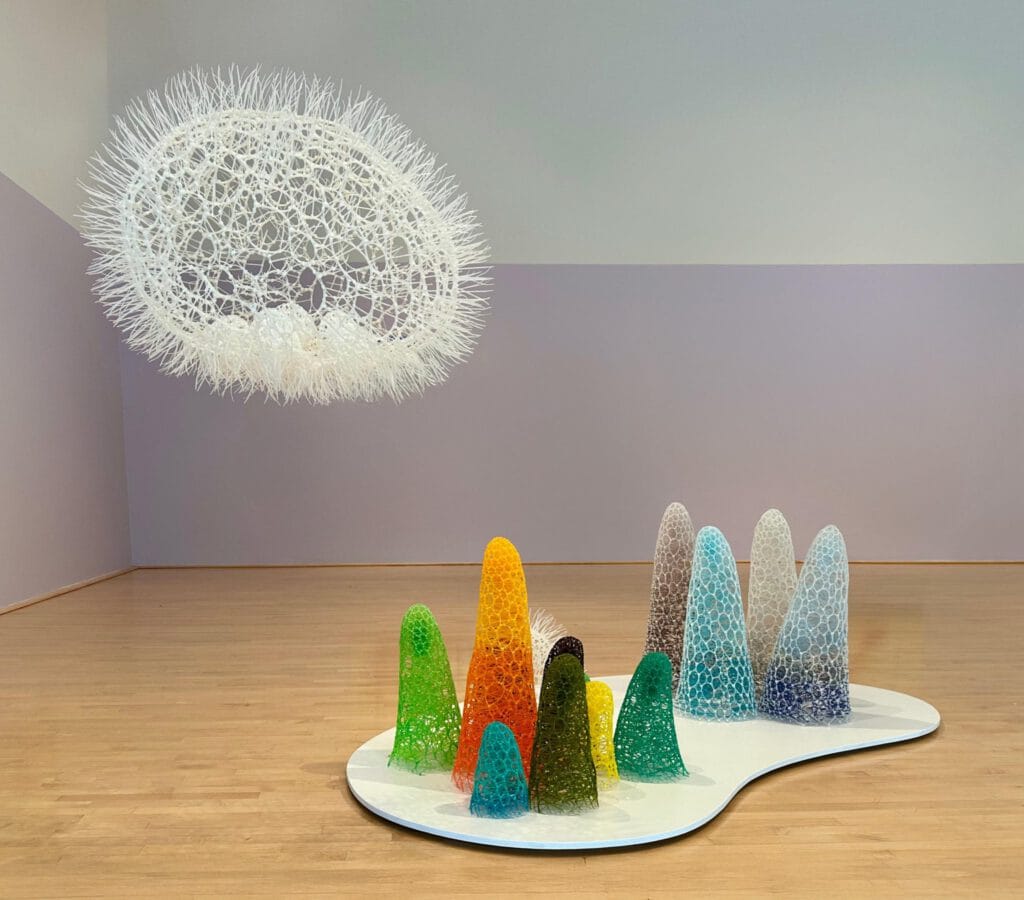
The Materiality of Transformation
Sui Park is drawn to ready-made contemporary materials because of their resilience and transformative potential. Her chosen medium, the humble zip tie, becomes an instrument of metamorphosis. Through knotting, bending, and weaving, Park creates forms that are simultaneously fantastical and familiar — architectural yet organic.
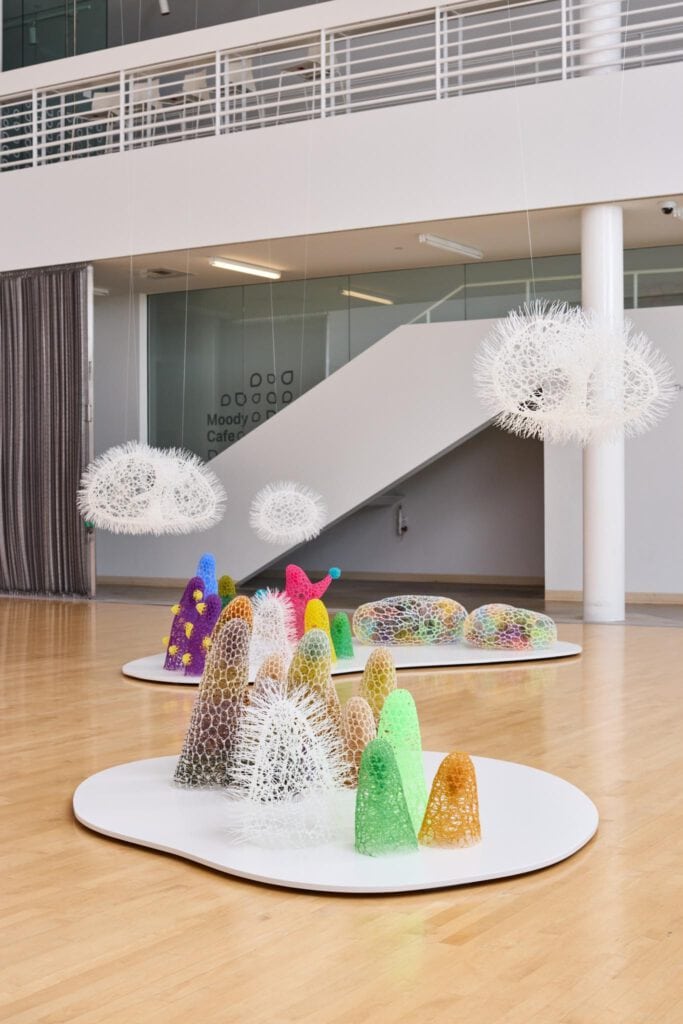
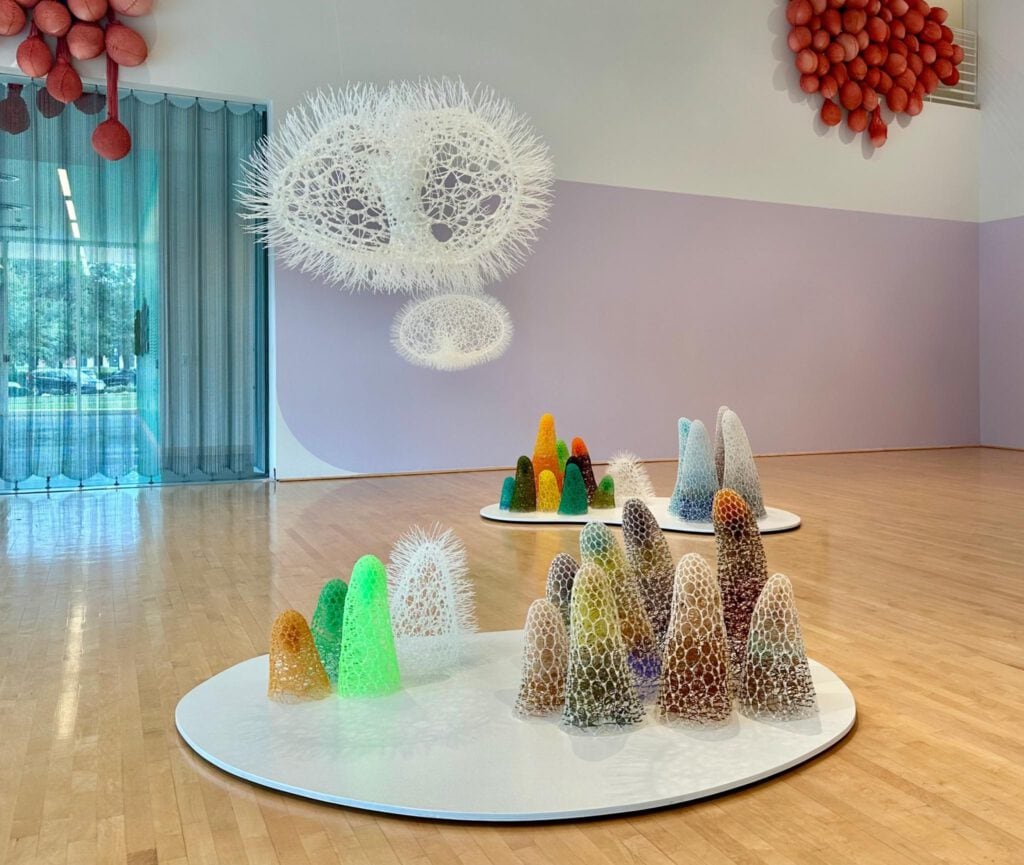
Her practice recalls that of Ruth Asawa and Gego, pioneers who used line and structure to explore the tension between air and volume. Like them, Park constructs spatial drawings that invite the viewer to linger in the space between form and void.
In recent dye experiments, she has expanded her color palette to include subtle tonal transitions — muted hues that lend warmth and emotional depth to her synthetic material. In this, her sculptures move beyond their industrial origin and enter a realm of visual poetry.
Bio Morphe – A Dialogue Between Nature and Technology
Running from September 5 to December 20, 2025, Bio Morphe at the Moody Center for the Arts (Rice University, Houston) explores the intersection of art, biology, and material science. Curated by Frauke V. Josenhans, the exhibition brings together seven international artists whose work blurs the boundaries between the organic and the technological.
Sui Park contributes both an outdoor commission and a series of indoor installations made of floor-based and suspended zip tie sculptures. Her Microcosm pieces expand through the galleries like living organisms — translucent, rhythmic, and self-supporting.
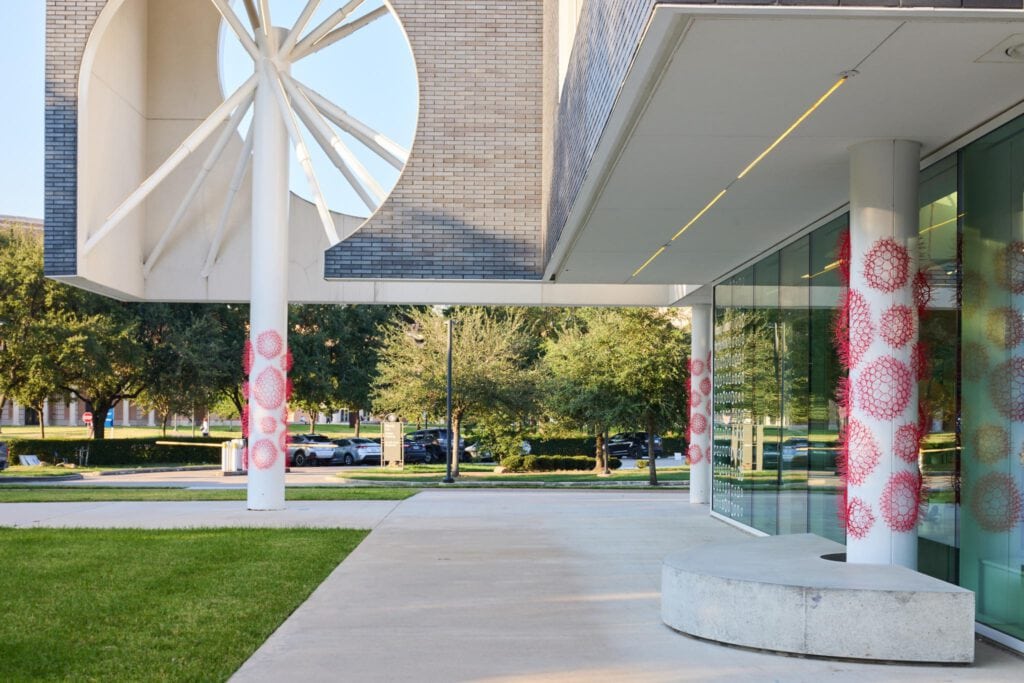
In one statement, Park notes:
“With the cable ties, I want to give them a long life in artistic ways and show how man-made materials can visualize Mother Nature in different ways.”
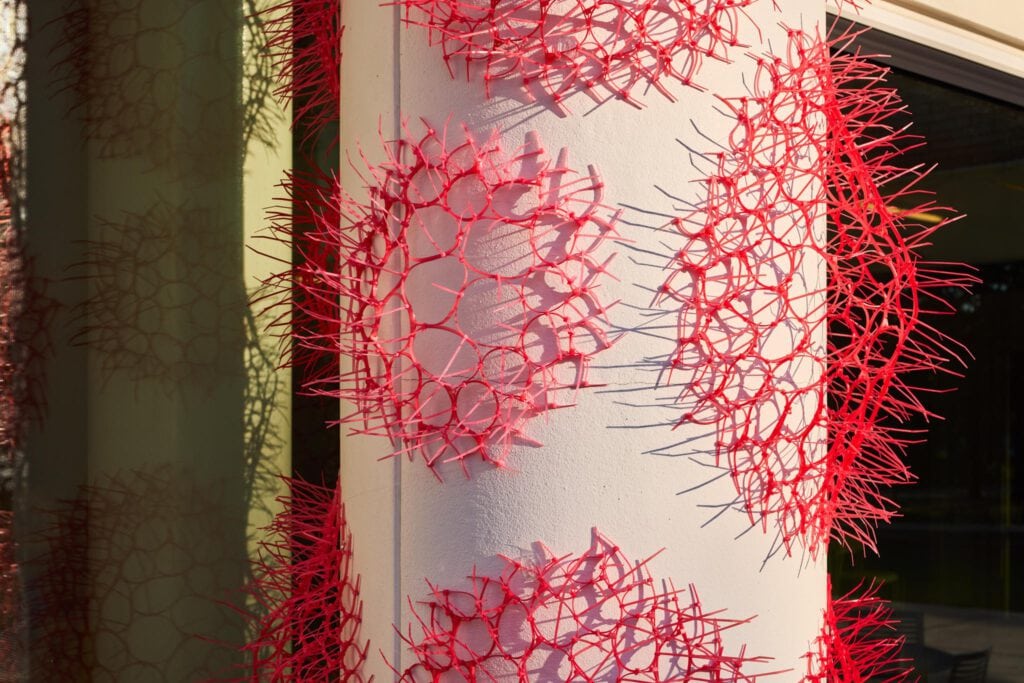
The exhibition also featured an Artist Panel on September 6, where Park joined Eva Fábregas and Lucy Kim in conversation about the biological and technological dimensions of their practices.
In Bio Morphe, Park’s installations inhabit both the architecture and the imagination. Her works climb, hover, and breathe, creating an atmosphere that oscillates between scientific curiosity and quiet wonder.
The Sculpture of In-Between Spaces
Park’s art doesn’t depict nature — it evokes it. Her installations are built around porosity, rhythm, and repetition. They invite light to move through, to create shifting shadows that alter the viewer’s perception of volume.
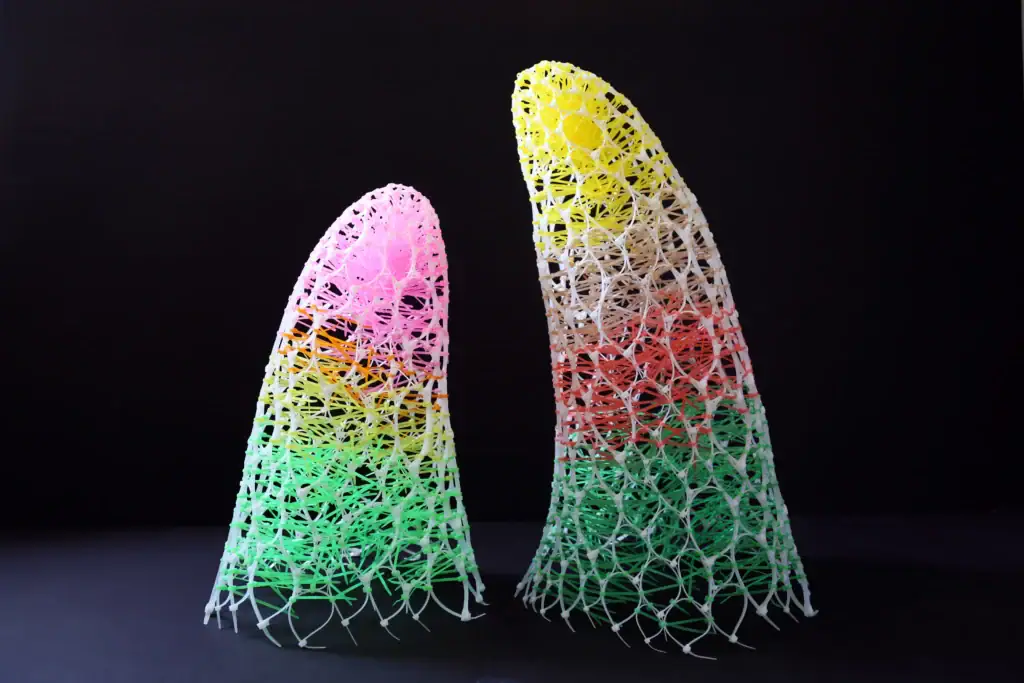
“Her dexterous fingers knot and bend the material to create a weave that’s architectural enough to be self-supporting.”
In Bio Morphe, her sculptures unfold like living networks — aerial, fluid, architectural. Each work occupies its space gently yet powerfully, as if tracing the invisible growth patterns of coral, cells, or thought itself.
Meaning and Transformation
What defines Sui Park’s practice is her capacity to transform the industrial into the intimate. Zip ties — mass-produced, disposable, overlooked — become metaphors for resilience and connection.
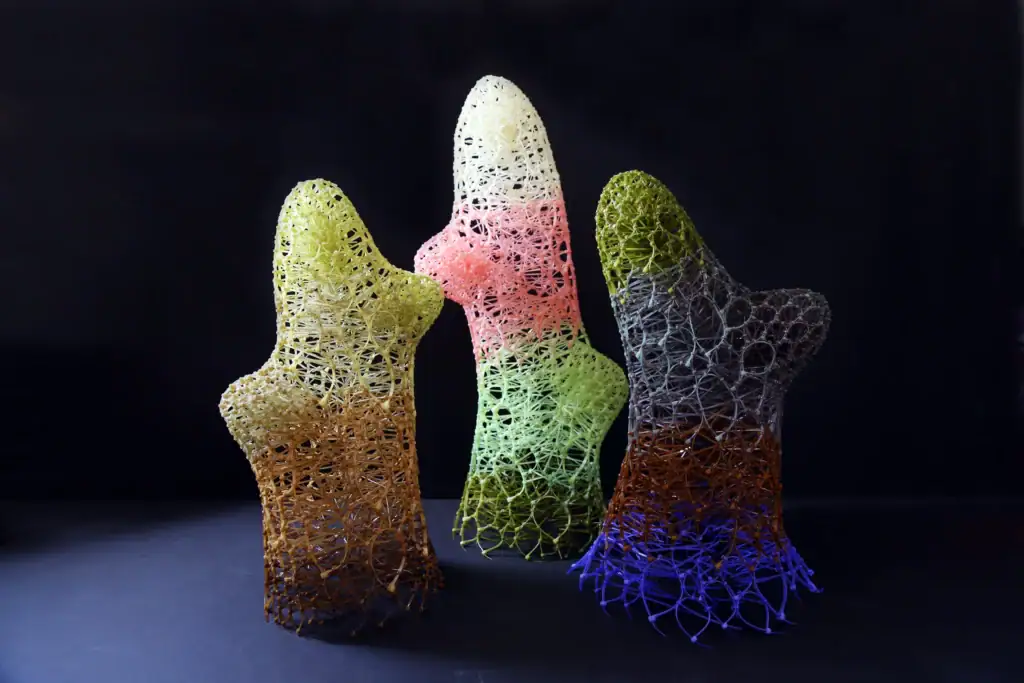
Her sculptures are not static objects but evolving forms, balancing between human hand and mechanical precision. In Houston, Bio Morphe situates her practice at the intersection of art, science, and sensory experience — a place where the material begins to feel alive.
Through her intricate weavings, Sui Park reminds us that even synthetic matter can carry emotion. Her works breathe softly, like murmurs of another world. Between structure and metamorphosis, she composes a language of form that turns the artificial into something tenderly alive.

